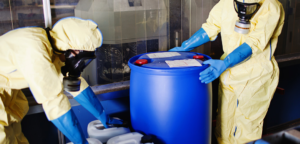Plumbing Lexington KY is a system of pipes that carry water into buildings and remove waste. It is one of the most complex and expensive systems to repair or replace in a home.

A home’s plumbing layout is a complicated network of supply lines, drainpipes, venting, and fixtures. While it looks like a random puzzle of pipes, the entire system works together logically.
The float switch is an important component in your sump pump system, as it monitors the water level in your air conditioner’s drain pan and signals the unit to activate when it detects excessive water. This helps protect your air conditioner from damaging water intrusion and prevents it from running continuously, which can shorten its lifespan.
When your float switch stops working, it can indicate that a number of issues are at play. It could be that there is a blockage in the drain line, or the float switch itself may have a problem. In either case, it’s important to perform some basic checks to help you determine the cause of the problem and whether or not the float switch can be repaired or needs to be replaced.
Start by examining the switches for any signs of damage or debris that could be causing the problem. Next, locate the float switch itself and check its condition. The float switch is typically a small device that contains a buoyant float connected to a switch mechanism. The float is usually encased in plastic or other materials to protect it from debris and sediment in the sump pit. The switch mechanism has a lever or rod that connects to the float, which contains electrical contacts that open or close based on the water level.
Another thing to check is the float switch’s wiring and setup. Some float switches are wired in a “normally closed” configuration, meaning that they turn on when the float is at the lowest position. Others are wired in a “normally open” configuration, which means that the float will only trigger when it is at its highest position.
It is also important to pay attention to the maximum contact voltage rating of a float switch, as this indicates the highest voltage that it can operate safely with. It is important to select a switch that has a rating that matches the application, as different switches are designed to work with different liquids and environment conditions. For example, float switches that are designed to be used in applications that involve oils or other flammable liquids will need to be constructed from a different material than those that are made for use with freshwater and other cleansers.
Inspect the Bottom
Plumbing is a vast underground network of pipes and fixtures that carry water and waste in homes and businesses. It is essential to modern life but can be complicated and confusing when something goes wrong. A plumbing failure can cause a lot of stress, but it can be avoided with routine maintenance and occasional repairs. Plumbers must comply with the International Plumbing Code, which sets standards for plumbing practices that protect public health and safety. If you notice any problems with your plumbing system, it is important to contact a professional plumber right away to prevent serious damage and costly repairs. A plumber will examine your system, make recommendations and perform any necessary repairs to get your plumbing back up and running.
To prevent clogs, clean the sump pump by inspecting and cleaning all components regularly.
Clean the Intake Screen
Often overlooked, your house’s ventilation intake and exhaust pipes are vital to keep your home fresh. These vents can easily get blocked by leaves, lint, and other debris. A simple cleaning of these screens is a good way to prevent them from blocking airflow and making the room feel stuffy.
For commercial power generation, water treatment, hydrocarbon processing or other critical industrial applications, a self-cleaning screen system is a necessary solution to protect equipment and expensive process materials from unwanted debris matter. AWMA self-cleaning intake systems use a rotating cylinder or cone-shaped screen with internal and external brush mechanical cleaning that eliminates clogging and suspended solid build-up without the need for additional air or water auxiliary cleaning equipment.
These patented designs allow for infinite variation in the design of the intake screen, including slot size, shape, orientation, fixed or retrievable track system and drive systems from hydraulic to electric to turbine and solar systems. ISI works closely with design engineers to leverage these patented designs to deliver custom-designed systems that meet specific site challenges and regulatory requirements.
The LAKOS PC Self-Cleaning Pump Intake Screen is a low maintenance solution for raw water intake at hydropower stations that reduces energy usage caused by repeated clogging of the river pump inlet and helps meet fish protection regulations. The system uses an internal backwash system to blow away debris from the screen surface, allowing the water to flow freely through and over the entire screen surface. This allows the system to maintain a high intake flow velocity while removing unwanted debris matter from the water flow and preventing pump damage.
Clean the Discharge Pipe
The discharge pipe is critical in making sure you don’t have a backup of water inside your home. It is also important that it is clear of obstructions and not buried. It is best if the line can be easily accessed so you can keep it clean and free from debris, like dirt or grass clippings. This can block the line, preventing the water from draining. This is why it’s a good idea to check the end of the discharge line every time you mow your lawn.
The length of the discharge pipe from a sanitary fixture to the air gap must comply with the size, material and performance requirements set forth in Acceptable Solution G13/AS1. Discharge pipes shall terminate not more than 6 inches (152 mm) above the floor or flood level rim of the waste receptor.
A simple way to keep your discharge lines in good condition is to periodically flush them with water and a little bit of drain cleaner. This is a great alternative to more invasive (literally) methods of cleaning.



